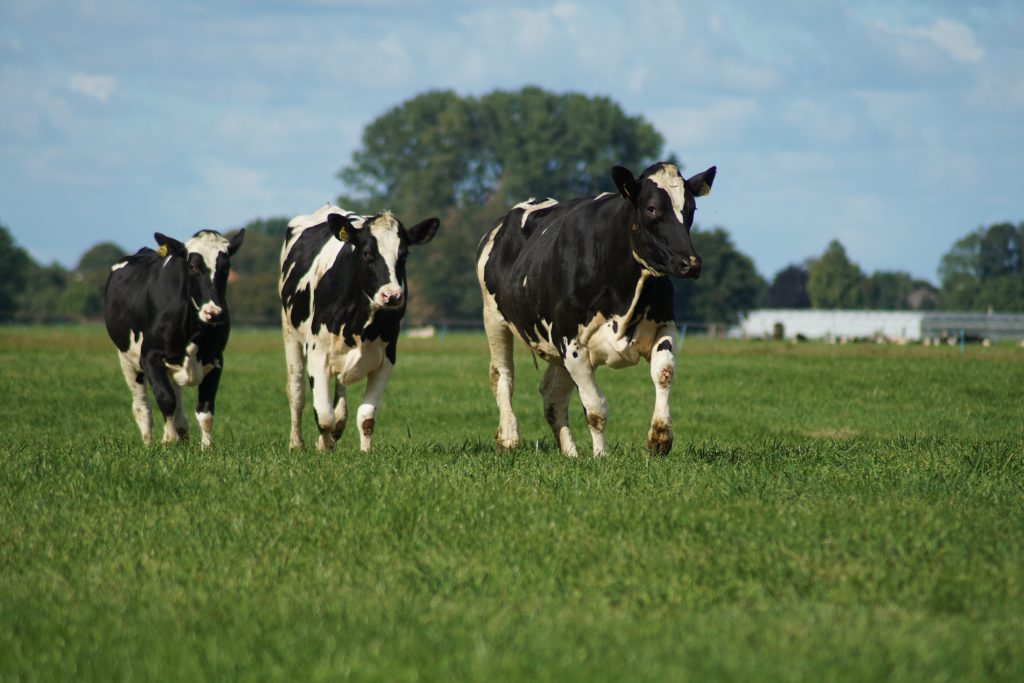- Governor Ned Lamont announces that Connecticut will dedicate millions in federal aid to the state’s dairy and aquaculture farms
- Industries suffered severe losses due to the loss of commercial purchasers such as restaurants and schools during the COVID-19 pandemic
- Aid also bolsters food aid programs that use Connecticut produced agricultural products to address agricultural insecurity
Summary by Dirk Langeveld
Nearly $10 million in federal COVID-19 relief funds will go toward assisting Connecticut’s dairy and aquaculture farms, Governor Ned Lamont announced on Wednesday.
Lamont announced the funding during a visit to Oak Ridge Dairy, a fifth-generation farm in Ellington. He said the dairy and aquaculture industries both suffered major market disruptions during the pandemic, and that the money comes on top of $1.45 million previously allocated to support farmers and food aid programs.
In addition to the farm support, further funding will be used to purchase Connecticut Grown products for drive-through distributions and extending the availability of Supplemental Nutrition Assistance Program (SNAP) benefits at farmers markets. The goal is for the funding to help support farmers while also addressing food insecurity.
“Our farmers and their teams are essential workers who played a critical role in getting Connecticut through the worst of the COVID-19 pandemic,” said Lamont. “I am grateful for their dedication to ensuring that our residents have access to clean, healthy food. This investment will help keep these incredibly important businesses afloat and keep Connecticut families fed.”
Connecticut’s dairy industry had already been in sharp decline in the years leading up to the pandemic due to factors such as persistent low milk prices and high production costs. While statistics from the U.S. Department of Agriculture show that 198 farms had a milk cow inventory in 2017, the number had fallen below 100 by 2019.
Research from the University of Connecticut last year found that the state’s dairy industry stood to lose $16.5 million in revenues in 2020, a drop of nearly 20 percent. This loss was attributed to a shift in consumer markets, including the loss of commercial buyers like restaurants and schools due to shutdown orders and difficulties faced by processors in meeting higher demand for products like packaged cheese.
“Connecticut agriculture was deemed essential during the COVID-19 pandemic, allowing them to continue planting, growing, and harvesting a diverse array of food critical to feeding the residents of our state,” said Connecticut Agriculture Commissioner Bryan P. Hurlburt. “However, like so many others, these family businesses were negatively impacted by market disruptions and closures. These funds will strengthen those sectors most severely impacted while also investing in food security programs buying Connecticut Grown food products to support local families.”
The USDA statistics for 2017 showed 64 aquaculture companies in Connecticut, primarily concentrated in mollusks. The Connecticut Sea Grant says the state is a major shellfish producer, especially in oysters and northern quahog clams, and that the industry is valued at more than $30 million.
Aquaculture was also negatively affected by the loss of restaurant orders, as eateries account for the majority of shellfish purchases. A Connecticut Sea Grant survey found that the average aquaculture farm in the state lost 93 percent of its revenues due to the COVID-19 pandemic.
“COVID-19 market disruptions shuttered many opportunities and devastated the aquaculture and dairy markets,” said Joan Nichols, executive director of the Connecticut Farm Bureau Association. “These strategic investments in agriculture are in great need for farmers to continue operating and providing safe, affordable, and healthy foods to residents.”








